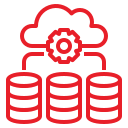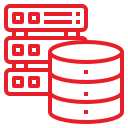Welcome to Robotic Process Automation (RPA), the technology revolutionizing businesses’ operations by automating repetitive tasks, reducing human error, and increasing efficiency.
RPA may help organizations in all sectors offload laborious tasks to boost capacity, lower the possibility of human mistake, and boost employee happiness. RPA is revolutionary because it enables organizations to automate operations and boost productivity while utilizing their current technology stack. This may allow organizations to concentrate on urgent modernization initiatives while extending the lifespan of vital legacy technology. RPA leverages no-code / low-code to build automation, resulting in quick, affordable deployments.
Technologies

Robotic Process Automation is a software technology that utilizes bots to automate repetitive, rule-based tasks typically performed by humans. RPA bots can interact with applications, extract and process data, and trigger responses. RPA differs from traditional automation tools because it can mimic human actions, making it possible to automate tasks requiring judgment and decision-making.

RPA bots are trained to perform tasks by capturing the actions of a human user. The bot can then replicate those actions to complete the job. For example, a bot can log into an application, extract data from a spreadsheet, and enter the data into another application. In addition, RPA bots can work 24/7 without breaks or errors, making them valuable assets to any organization.
RPA can perform tasks faster and more accurately than humans, freeing time for employees to focus on higher-level tasks.
RPA eradicates the risk of human error, which can result in costly mistakes and delays.
RPA can ensure compliance with regulations and reduce the risk of non-compliance.
RPA can significantly reduce the cost of labor and increase productivity by automating repetitive tasks.
RPA can be scaled up or down as required, making it an excellent solution for organizations with fluctuating workloads.



Consider Texplorers as your reliable technology partner
Please fill the to form below form to get callback from ou team